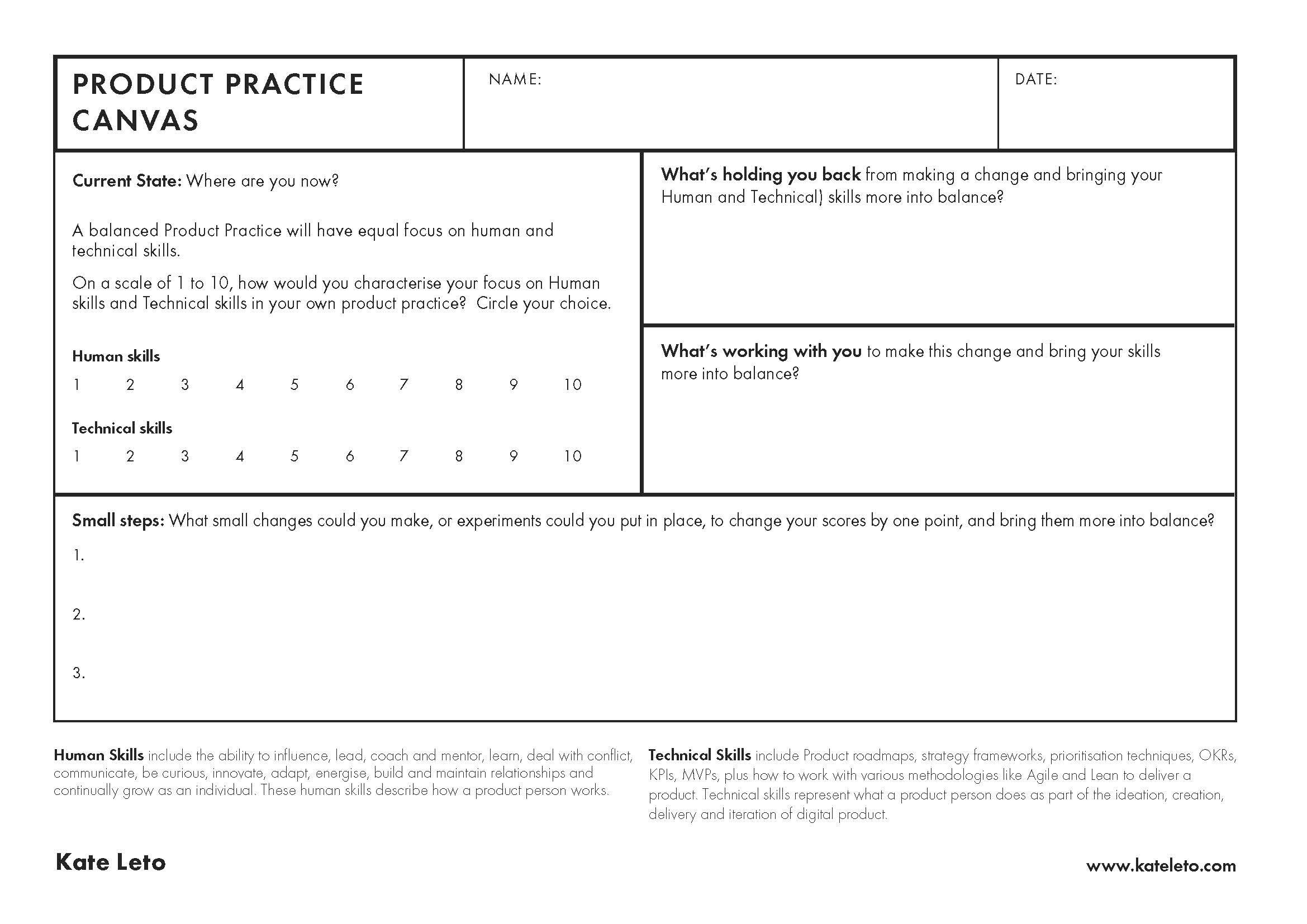Product EQ Toolkit Part 1: The Product Practice Canvas
One of the primary reasons that I wrote Hiring Product Managers: Using Product EQ to go beyond culture and skills was to show that hiring can be an agent of change. More than just "staffing teams," approaching hiring in a meaningful way can have a great impact on our personal growth, team dynamics and even shape our organisational culture.
In the book, I share a story of a new director of product’s missteps as he and his team attempt to hire their way to become a thriving product organisation. Throughout the book, the teams use practical tools that not only evolve their hiring process, but shift their thinking of what healthy product management culture and essential product skills are.
(Spoiler alert - from my two decades of product experience, I've found that essential product skills are not just technical skills like building great roadmaps, creating OKRs, priortisation techniques, strategy frameworks, etc., but also human skills like the ability to influence, lead, coach, learn, innovate, deal with conflict and many others. I think of the collection of these human skills in practice as Product EQ).
Over the next few weeks, I want to share some of the exercises from my book and client practice to help you and your teams develop your Product EQ while changing the way you think about hiring.
This first article includes a self-reflection exercise called the Product Practice Canvas that you can use on your own, or with clients in leadership coaching. A balanced product practice has equal focus on human skills and technical skills. Use this canvas to reflect on your own product practice by reflecting on the current state of both technical and human skills, and chart small steps to create change.
Why am I starting with a self reflection exercises? For one simple reason:
“If you are going to hire product managers with Product EQ, you need to have it yourself. If you don’t have it, you can’t see it!”
How to use the Product Practice Canvas
From my product experience over the last two decades, I have found that the key to understanding product management is to think of it as a practice—somewhat like a doctor practicing medicine or a lawyer practicing law. Product people select from a variety of tools that live in our virtual toolbox to solve a problem. Given that the technologies we’re working with are often new, there’s no sure way to solve that problem, so there’s a lot of experimentation, trial, and error. Sometimes it works, sometimes it doesn’t—but product people won’t know for sure until they try.
It takes a lot of practice, and it takes a special set of skills - both human and technical - to be that product person who can continually experiment in times of stress and pressure. It also requires a unique type of leadership and culture to empower teams to do just that.
This canvas guides you through a quick reflection on how balanced (or unbalanced) your product management practice may be. Take a few minutes to consider each question.
On a scale of 1 to 10, how would you characterise your focus on technical skills and human skills in your own Product Practice? Start by identifying a number from 1 to 10 for technical skills and also for human skills. For example, a recent client scored themselves an 8 out of 10 for technical and 6 out of 10 on human skills. This initial score should be a general representation of where you think you are. It’s just a place to start, so don’t overthink it. You can find more examples of human and technical skills in the footer of the canvas, and even more in an earlier article that I wrote about Product Practice.
What is holding you back from bringing the two dimensions more into balance? For example, maybe you don’t have a great deal of understanding or comfort level with human skills? (You’re not alone there!) Or maybe, there is a strong focus on technical skills in your team or product organisation, leaving you without space to explore and develop human skills like influence, collaboration, and curiosity.
What’s working with you to make these changes? Do you have a peer or manager at work who can support you while you learn more about human skills? Have you recently started working with a coach to help you develop in these areas?
What small changes could you make, or experiments could you put in place, to change your scores by one point, and bring them more into balance? How can you get that 6 on human skills up to 7? For example, if you’d like to focus on increasing self-awareness, can you challenge yourself to ask five colleagues for feedback in the next two weeks? If you’d like to work on your ability to influence, can you push yourself to set up meetings with two sticky stakeholders to understand their own challenges or concerns on a recent project?
Answer these questions yourself and share your responses with someone. It could be a peer, mentor, manager, or even your wider team. The more comfortable you are sharing your work on human skills, the more others will want to be involved and the better chance you have of actually following through on your personal challenge.
If you found this valuable, I graciously ask you to check out my book and let me know what you think! You can also read more about these product exercises or my book, Hiring Product Managers, on my website kateleto.com
Subscribe to Product Leadership Essentials
Sign-up to my email newsletter to learn more about how to better understand and build your authentic Product Leadership skills.

